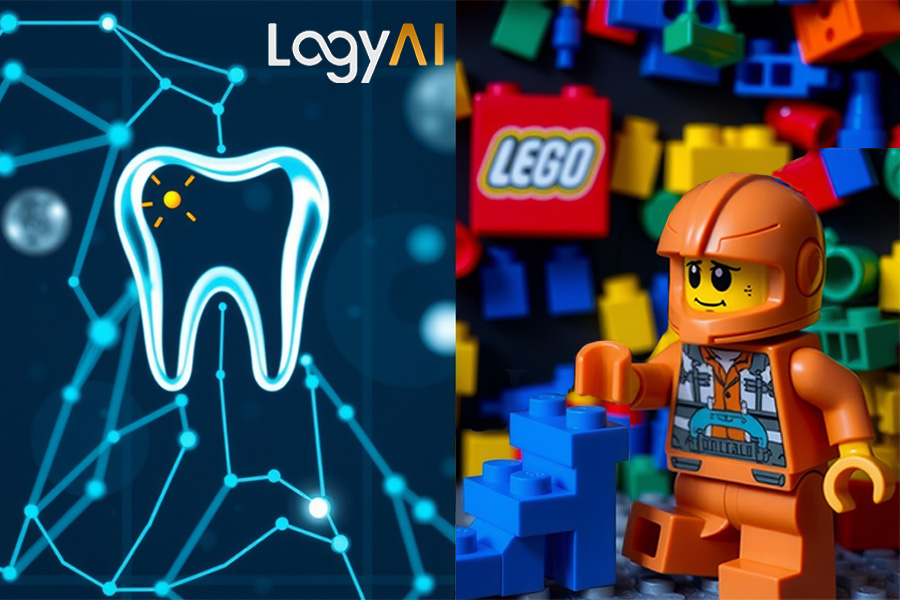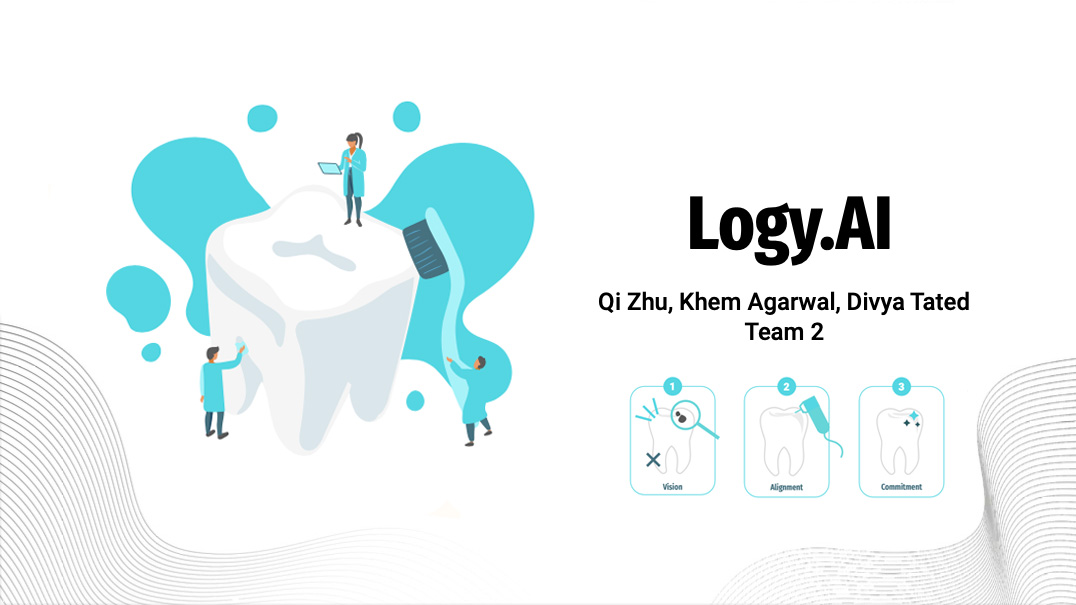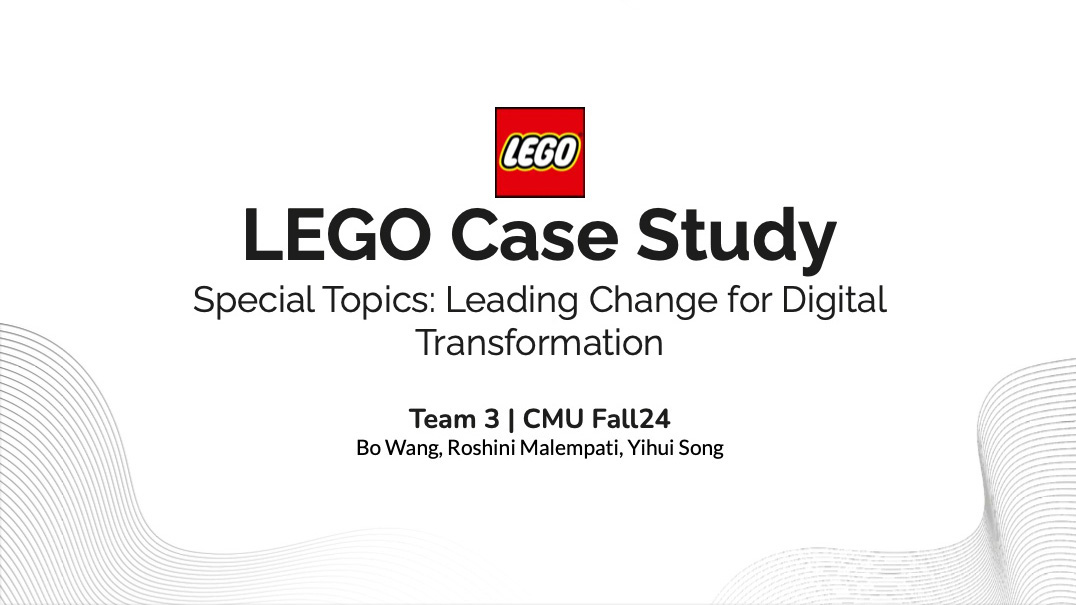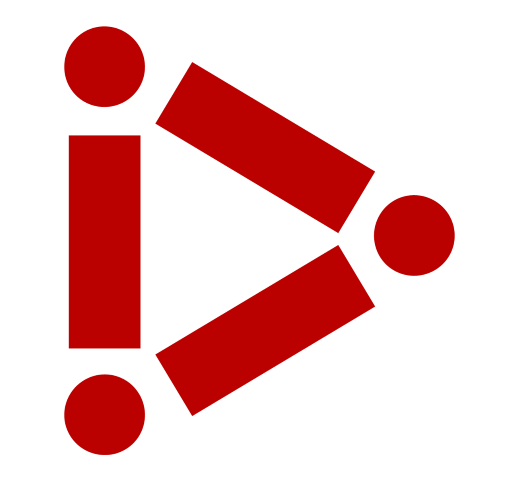
Leading Change for Digital Transformation
By Phil Geist
What is Digital Transformation?
Digital transformation is the process of using technology to change how organizations operate, deliver value to customers, and compete. It involves rethinking processes, people, and technology together. A successful Digital Transformation requires a clear vision, alignment across the organization, and commitment from leaders to adapt and embrace new ways of working.
Digital transformation integrates technologies such as AI, cloud computing, big data analytics, IoT, and automation to boost operational efficiency and foster innovative business models. It emphasizes a customer-first approach by enhancing personalization and streamlining digital interactions.
Agility and adaptability are fostered to quickly respond to evolving market conditions, alongside promoting a culture of collaboration, continuous learning, and experimentation to support this transformation. Digital transformation is not just about adopting technology but also about rethinking how an organization delivers value in the digital age.
Why does Digital Transformation matter?
Digital transformation matters because it enhances customer experiences through personalized and efficient services while streamlining operations to improve efficiency and reduce costs. At the heart of digital transformation is value creation. The goal is not just to digitize processes, but to rethink how the organization can deliver value to customers, improve user experiences, and build a competitive advantage. Digital transformation is vital for businesses to stay competitive, resilient, and innovative in a rapidly changing world. Additionally, digital tools facilitate global scalability and resilience, ensuring business continuity during disruptions and unlocking new growth opportunities.
Introduction
"Leading Change for Digital Transformation" is a special topics course in the Master of Science in Software Management program at Carnegie Mellon University’s Silicon Valley campus. The course was taught by Professor Jorge Taborga during the fall semester of 2024. The course explored the common changes needed by users in digital transformation initiatives and it highlighted the importance of human-centered change to ensure the successful adoption of new technologies.
The Assignment
Logy.AI Case Study
Lego Case Study
Faculty Insights
What was the Assignment?
To practice the concepts learned in class through a real-life case study in digital transformation and demonstrate their practical application. Students can immediately take what they learned in the classroom and apply it to their jobs and other classes. Students selected an organization to research and profile in a case study. The assignment had three stages: analyzing the digital transformation initiative using course frameworks and submitting a report for feedback, developing a preliminary change plan and presenting the updated analysis for further input, and creating a final report that incorporates all feedback and includes a detailed change plan. This process helps students build practical knowledge incrementally, with grading becoming more rigorous as they refine their work through corrections and insights.
Continue reading to explore the key highlights from two teams featured in the class, each focusing on the respective companies of Logy.AI and Lego.
Logy.AI Case Study

Team Logy.AI's presentation focused on using AI to tackle oral healthcare challenges in underserved areas with limited access to medical attention. Their vision integrates AI to improve diagnostics in rural regions, offering scalable and affordable solutions like AI-driven diagnostic tools and a WhatsApp chatbot designed to address digital literacy barriers, ensure data privacy, and comply with regulations. Predictive analytics was emphasized for anticipating health issues. To implement these solutions, the team proposed a digital transformation strategy using the ADKAR framework, with a two-phase plan: training non-technical teams and fostering cross-department collaboration. Future goals include exploring advanced AI models, virtual dental assistants, and personalized care analytics, with a continued focus on collaboration, digital literacy, and data security.
Student Perspectives
Questions for Team Logy.AI:
iii: How did you use the course frameworks to analyze the company’s digital transformation initiative? Which specific framework(s) were most helpful, and why?
Team Logy.AI:
- ADKAR Model: Assessed employee readiness for change across Awareness, Desire, Knowledge, Ability, and Reinforcement. Highlighted strengths in awareness and knowledge, but revealed weaknesses in reinforcement.
- Forrester Digital Maturity Framework: Evaluated Logy.AI's progress through modernization, transformation, and new business creation stages. Showed significant strides in the transformation phase.
- Value Stream Analysis: Identified potential areas for optimization in the oral health screening process, such as implementing real-time image quality checks and using AI for pre-screening.
- Iterative Change Plan (Looping Methodology): Developed targeted experiments to address specific issues, like improving non-technical teams' awareness and enhancing cross-department collaboration.
iii: What key challenges did you identify in implementing the digital transformation initiative, and how does your change plan address these challenges?
Team Logy.AI:
Key challenges identified in implementing Logy.AI's digital transformation initiative:
- Regulatory compliance in diverse healthcare markets
- Data privacy and security concerns
- Digital literacy gaps among target users
- Cross-department collaboration issues
- Lack of reinforcement for new behaviors
The change plan addresses these challenges through: Iterative approach using Looping methodology
- Focus on non-technical teams in Iteration 1:
- Targeted communication and training
- Pilot program with hands-on workshops
- Incentives for participation
- Improving cross-department collaboration in Iteration 2:
- Cross-functional workshops
- Clear role definition in project teams
- Small cross-functional DTX projects
This plan aims to progressively refine the approach, ensuring higher engagement, collaboration, and overall success in addressing the identified challenges.
iii: What were the most significant pieces of feedback you received during the different stages of the assignment? How did incorporating this feedback improve your analysis and change plan?
Team Logy.AI:
As a team, we received significant feedback throughout the Logy.AI digital transformation assignment that improved our analysis and change plan:
- Focus on cross-functional collaboration: We emphasized bridging gaps between technical and non-technical teams in Iteration 2 of our change plan.
- Provide concrete examples: We included specific scenarios and personas like Amina, Raj, and Maya to illustrate DTX impact.
- Emphasize reinforcement: We addressed the weak reinforcement area (40%) in our ADKAR assessment by including recognition and reward programs.
- Adopt iterative approach: We implemented the Looping methodology for more flexible change management.
- Analyze value stream: We conducted a detailed breakdown of the oral health screening process, identifying areas for AI-driven optimization.
iii: How do the insights gained from this case study apply to your current or future work? Can you identify potential areas where you could apply similar approaches or frameworks?
Team Logy.AI:
The insights gained from the Logy.AI case study offer valuable lessons that can be applied to various current and future work scenarios:
- Iterative change management: The Looping methodology used by Logy.AI demonstrates the importance of an adaptive approach to digital transformation. This can be applied in any project by:
- Breaking down large changes into smaller, manageable iterations
- Focusing on specific issues in each iteration
- Continuously refining strategies based on feedback
- Cross-functional collaboration: Logy.AI's emphasis on bridging gaps between technical and non-technical teams is crucial. This can be implemented by:
- Organizing cross-functional workshops
- Establishing clear roles in project teams
- Launching small cross-functional projects to improve collaboration
- ADKAR framework application: Using this model to assess change readiness can help identify strengths and weaknesses in any transformation initiative. It allows for:
- Targeted communication strategies
- Tailored training programs
- Focused reinforcement efforts
- Value stream analysis: Identifying and optimizing core processes can lead to significant improvements. This approach can be applied by:
- Breaking down key processes into steps
- Identifying potential areas of time waste
- Implementing targeted optimizations, such as automation
- AI integration: The case study showcases innovative AI applications in healthcare. Similar approaches could be explored in other industries by:
- Identifying repetitive tasks suitable for automation
- Leveraging AI for predictive analytics
- Exploring AI-driven personalization of products or services
By applying these insights, organizations can create more effective digital transformation strategies, improve cross-team collaboration, and leverage AI to enhance their core processes and offerings.
Lego Case Study

Student Perspectives
Questions for Team Lego:
iii: How did you use the course frameworks to analyze the company’s digital transformation initiative? Which specific framework(s) were most helpful, and why?
Team Lego:
- We used the following frameworks to analyze LEGO’s digital transformation:
- Historical evolution analysis, which maps out the key events happening within LEGO operations, interactions with adjacent stakeholders, industrial and social trends. This exercise helped us to systematically understand how LEGO was established and developed over multiple phases of digital transformation.
- Forrester’s Digital Maturity Model. This assessment analyzes LEGO’s responses to 16 questions about the company’s strategy, structure, culture, talent, and technology.
- The Five-value Framework discussed in class to identify the top three values of DTX. The five values brought by digital transformation are improved user experience, increased revenue, reduced operational costs, redacted risk profile, enhanced organizational capabilities.
- The Project to Product Framework by Mik Kersten, which differentiated the product operating model from the project operating model.
- Value Stream Mapping and Analysis. This framework was originally developed by Toyota to improve efficiency and eliminate waste in manufacturing processes. We used its 3M Process (Muda, Muri, and Mura) to lay out the steps and identify where the time and wasted time are spent in the product launch process of LEGO in its DTX efforts.
- Based on the current state of LEGO’s digital transformation efforts, we also explored the future AI opportunities and change management considerations via the following steps:
- We identified the opportunities for AI and Generative AI for LEGO from the perspectives of Customer Support, Software Development, Product Design, and Idea Collection.
- Among those AI-related opportunities, we prioritized customer centric feedback analysis with generative AI to perform the readiness assessment using ADKAR Model from Prosci. ADKAR is a change lifecycle assessment tool to evaluate the awareness, desire, knowledge, ability, and reinforcement with regards to the proposed changes within LEGO organization.
iii: What key challenges did you identify in implementing the digital transformation initiative, and how does your change plan address these challenges?
Team Lego:
- Our ADKAR analysis showed that the digital transformation initiative of leveraging generative AI to analyze customer feedback faces the following challenges:
- Awareness (3.0): Generative AI's potential in understanding natural language and customer feedback is widely recognized, with examples from the retail industry highlighting its benefits. While LEGO has announced plans to explore generative AI, unclear messaging due to IP and data security concerns may hinder full employee awareness and alignment.
- Desire (3.3): Employees recognize AI's productivity benefits through industry examples but may have concerns about job security and IP protection. LEGO should emphasize how AI enhances efficiency and creativity without threatening jobs.
- Knowledge (2.67): LEGO needs expertise in LLMs and effective data utilization. While the company has a strong data-sharing culture, gaps remain in NLP skills and real-time feedback integration. Hiring NLP talent and leveraging external training can bridge these gaps.
- Ability (2.33): LEGO’s strong data foundation and API-driven design enable data sharing, but gaps in aligning product knowledge with generative AI expertise hinder seamless integration of AI insights into product design workflows.
- Reinforcement (1.67): As this is a new transformation process, there are no incentives available. We expect the company to build a program that encourages the designers to share good experiences with the new AI solution, and periodically collect feedback and review them carefully to make sure the improvement is in effect.
- To develop a new solution to leverage generative AI in feedback analysis and adopt new processes associated with the AI-generated insights, we propose to implement an iterative change plan with two loops as below:
- Iteration 1
- Tension: Concerns about driving operations with AI-generated insights, which covers:
- Iteration 1
- Lack of technical expertise in developing Gen AI Apps.
- Fear of job loss.
- Inefficiencies in current data collection & analysis processes.
- Concerns about data privacy and ethics.
- Decision-making dilemma between AI insights & human judgments.
- Practices:
- Form a cross-functional team to guide the development.
- Host workshops on AI insights’ value for decision-making.
- Provide training programs on Gen AI-based social media analytics.
- Establish clear data privacy policies.
- Streamline internal processes with AI insight integration.
- Actions:
- Pilot AI analysis on a single product line, compared with existing feedback methods.
- Run a mock product launch with AI-assisted decision-making.
- Hold a hackathon to design new products with AI insights.
- Test a new data privacy framework on a small scale.
- Iteration 2
- Tension: Uncertainty around the scalability of AI-driven operational processes, which covers:
- Balancing AI insights with brand identity and core values.
- Scaling AI insights across all product lines and departments.
- Ensuring consistent data quality across platforms.
- Increased workload during the transition period.
- Biases in AI algorithms.
- Practices:
- Issue AI guidelines that align with LEGO values.
- Implement a phased rollout plan with clear milestones and success metrics.
- Establish robust data validation and cleaning processes.
- Regularly audit AI algorithm.
- Actions:
- Apply AI insights to design and release a product to see customer response (*or blind tests).
- Test implementation of AI insights aided processes in one region before global roll-outs.
- Pilot a flexible work arrangement to manage workloads during the transition.
iii: What were the most significant pieces of feedback you received during the different stages of the assignment? How did incorporating this feedback improve your analysis and change plan?
Team Lego:
Yihui Song:
At the beginning of this group assignment, the professor shared an insightful piece of advice: “I highly recommend practicing your storytelling by adding emotion, personalization, and a story arc…Why? Being successful with DTX starts with a vision, followed by creating alignment and commitment. Also, leading and managing change is fundamental to DTX's success. All of these actions require inspiration, and influential storytelling is the root of them”. His note inspired us to kick off a holistic historical evolution analysis by collecting massive contents and papers online to streamline the story arc of LEGO digital transformation journey. We went beyond the original case study material around the LEGO leadership model to explain how LEGO showcased its robustness in continuously evolving its operating model and product development. This analysis benefited us to thoroughly understand the essence of LEGO culture and prioritize which areas are the most valuable and urgent for the company’s digital transformation.
Bo Wang:
I was not sure if this was the right project the first time I read through the document as it was mainly talking about the general leadership and I was not sure if this can be really connected to the digital transformation specifically. The professor suggested we dig out a more detailed story for Lego and explain how the changes in leadership principles could lay the solid foundation for LEGO’s later success in digital transformation. With all the additional papers and stories we found for LEGO, I was able to look at the transformation process from a high-level perspective, and it all made sense.
Roshini Malempati:
It is important to start small and achieve success rather than put your feet in multiple areas and experience potential failures. Therefore, when creating our training and change management plans, we utilized what we believe are Lego’s top 2 tensions from each iteration loop. It is important to realize the need for change and then develop innovations and experiments that will help customers. From those results, we have to have a clear call to action. Therefore, from a list of possible actions we focused on the most promising and competitively advantageous action, which is leveraging AI, and listed suggestions to achieve this.
iii: How do the insights gained from this case study apply to your current or future work? Can you identify potential areas where you could apply similar approaches or frameworks?
Team Lego:
Yihui Song:
I came from a tech consulting background and focused on corporate operational efficiency in my previous work. This exercise sharpened my skill of storytelling and elevated my horizon towards executive leadership. Researching a company’s historical evolution and digital transformation is like peeling an onion—each layer reveals deeper insights, from its foundational roots to the complex strategies shaping its modern adaptations. I enjoyed this study process and obtained a sense of accomplishment — LEGO is one of my favorite companies in retail and I have always been hoping to learn how it achieved success over 90 years of history. In the future, I plan to leverage this momentum to do more case studies and keep my perspectives sharp, which is critical to my career path in entrepreneurship.
Bo Wang:
I’m working in the semiconductor industry and my organization is also in the process of AI transformation, the technology that I gained from this course not only provides frameworks for me to evaluate our readiness but also provides practical actions that we can take now to move forward. In the meantime, I would use the change management tools to make sure the whole transformation process is smoother. Last but not least, as an engineering manager, I actually have already started trying some engineering practices suggested by the class to improve my team’s product quality as well as productivity.
Roshini Malempati:
I come from an engineering background. This course helped me understand how to smoothly incorporate change principles whether digitally or leadership-wise. The frameworks I have learned throughout the course and implemented within the case study will help improve the productivity and efficiency of current and future agile teams. These frameworks will also help me analyze a company's current state and what can be done to take things to the next level in the long term.
Faculty Insights
 "I highly recommend practicing your storytelling by adding emotion, personalization, and a story arc. Digital Transformation starts with a vision, followed by creating alignment and commitment. Also, leading and managing change is fundamental to Digital Transformation's success."
"I highly recommend practicing your storytelling by adding emotion, personalization, and a story arc. Digital Transformation starts with a vision, followed by creating alignment and commitment. Also, leading and managing change is fundamental to Digital Transformation's success."
PROFESSOR JORGE TABORGA
Quote from class:
"Some people call this digital transformation; others refer to it as the fourth industrial revolution. But I actually think it's about something bigger—it's about the relentless capacity of technology to change everything." - Ginni Rometty, former CEO of IBM
Professor Jorge Taborga talks about Digital Transformation:
The future of digital transformation combines innovation with thoughtful change management, inclusivity, and global collaboration. Advances in AI and generative AI will transform industries by improving efficiency, enhancing customer experiences, and solving complex problems. At the same time, focusing on human-centric design ensures these solutions are accessible and impactful. Building scalable ecosystems, addressing ethical concerns like job security and data privacy, and investing in workforce training will be essential for success. By fostering collaboration and carefully implementing these changes, digital transformation has the potential to create meaningful progress for businesses and society.





